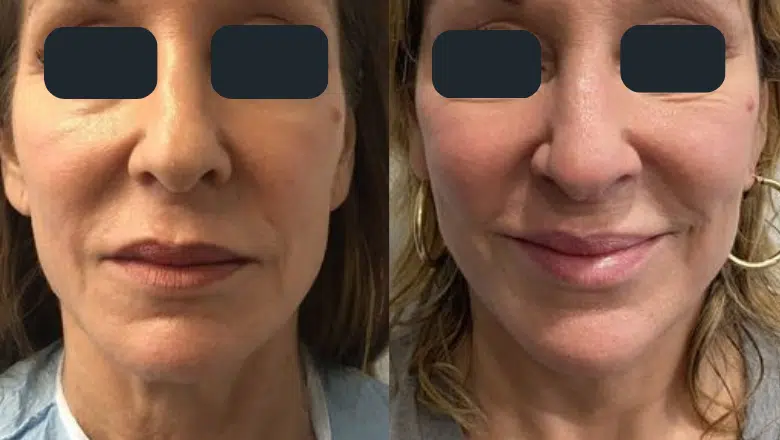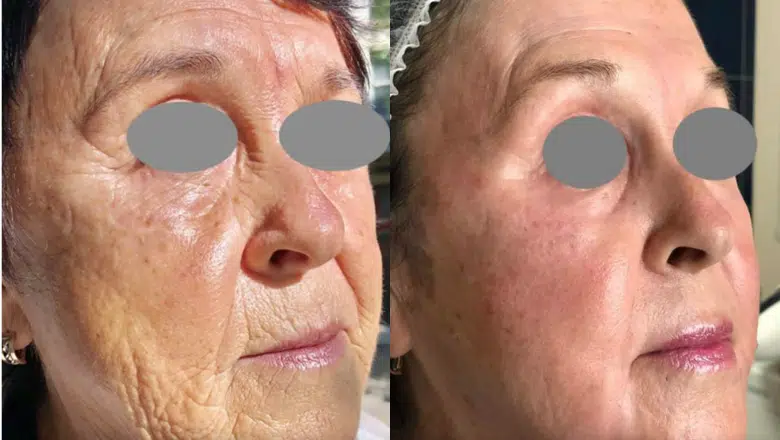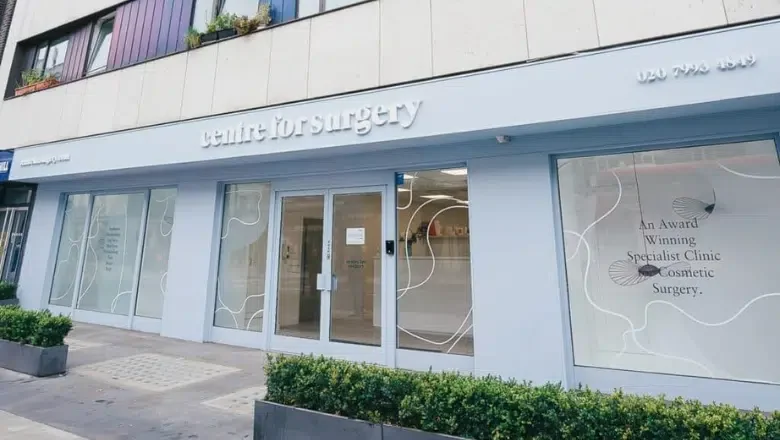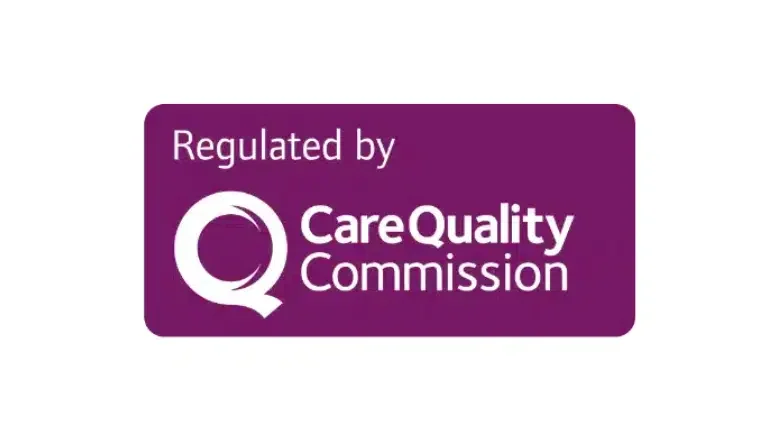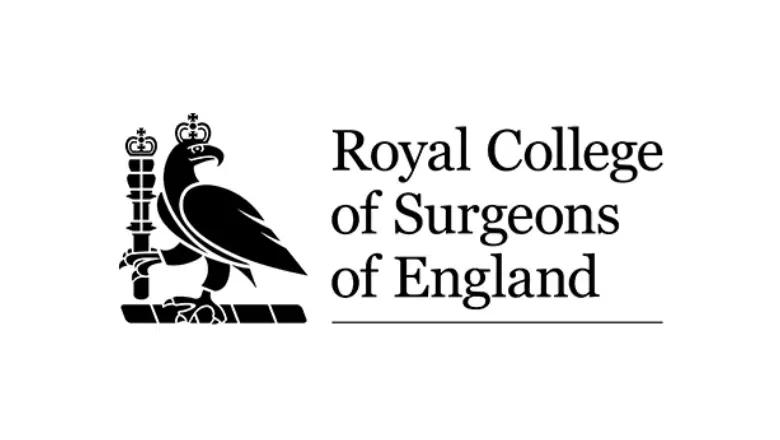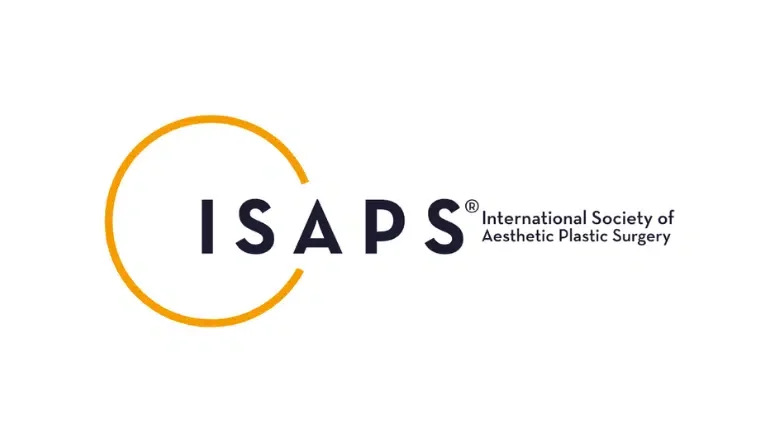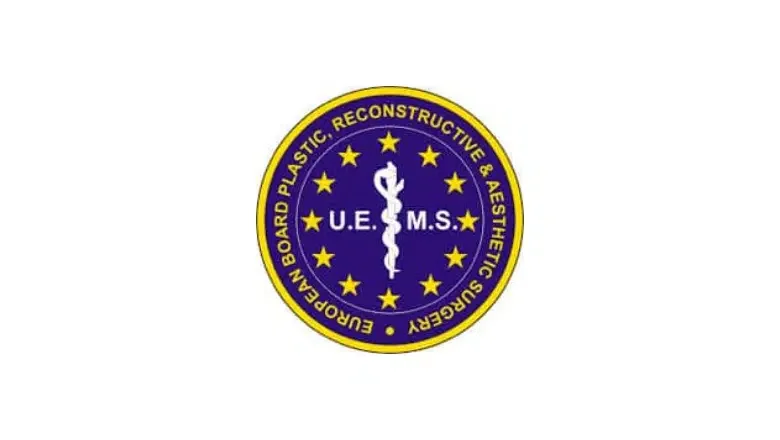As we age, it’s natural for our skin to lose some of its elasticity. Lines become more visible, the jawline softens, and the skin may start to sag. At the same time, old acne scars—left behind from breakouts earlier in life—can seem even more prominent as the skin changes. Many people aren’t aware that a facelift, typically associated with tightening loose skin and improving signs of ageing, may also improve the look of certain acne scars. At Centre for Surgery in London, we see many patients who are curious about whether facelift surgery can give them smoother, fresher-looking skin while also softening the marks left behind by acne.
In this article, we’ll explore how facelift surgery works, why it might benefit patients with acne scarring, and what you should know if you’re considering this treatment option.
RELATED: What Is The Most Effective Treatment For Acne?
What is a Facelift?
A facelift, or rhytidectomy, is a surgical procedure designed to lift and reposition the skin and deeper tissues of the face. The main goal is to tighten loose skin, redefine the jawline, and smooth out deeper folds and wrinkles that develop over time. The surgery doesn’t change who you are—it simply helps your face reflect how youthful and vibrant you may still feel inside.
During the procedure, small incisions are made, typically around the hairline and ears, allowing the surgeon to lift the underlying muscles and remove excess skin. The result is a firmer, more youthful contour without the overly “done” look people often worry about. The aim is always natural-looking results that complement your features.
Can a Facelift Help Improve the Appearance of Acne Scars?
Acne scars come in various shapes and depths, often leaving behind indentations that affect the texture and smoothness of the skin. For many people, these scars become more noticeable with age as the skin loses its firmness. The scars may appear more pronounced and sunken as the skin begins to sag, especially in the cheeks and lower face. One lesser-known benefit of facelift surgery is its potential to improve the look of certain types of acne scars by addressing the issue of skin laxity.
A facelift doesn’t remove acne scars directly, but it does lift and tighten the skin, which can stretch out some of the depressions and soften their overall appearance. When the skin is firmer and more taut, the scars often appear shallower and less visible. This is particularly true for rolling or soft indented scars that are made worse by sagging skin around them. In these cases, lifting the skin can subtly smooth out the surface, creating a more even and rejuvenated look.
While a facelift can offer this benefit, it’s not always the best approach for everyone dealing with acne scars. There are many non-surgical skin treatments—such as microneedling, laser therapy, and chemical peels—that are highly effective for treating mild to moderate scarring. These options may be more suitable if your skin is still relatively firm and you’re only concerned about surface-level scars.
However, for individuals with visible skin laxity and deeper acne scars—especially in the mid to lower face—a facelift might be the most appropriate solution. This is because the procedure not only removes loose skin but also repositions and tightens what remains, which can smooth out the face and reduce the appearance of some scarring at the same time. In rare cases, where acne scars are particularly deep or tethered, a surgeon may recommend combining facelift surgery with surgical scar revision for more targeted results.
What Types of Acne Scars Can Be Improved with a Facelift?
Acne is a complex skin condition that leaves different marks behind, depending on how severe the breakouts were and how the skin healed. Not all scars are the same, and their appearance can vary greatly from one person to the next. As we age, the skin loses collagen and elasticity, which can make some scars look deeper and more obvious. In certain cases, facelift surgery can help reduce the visibility of specific types of acne scars, particularly those made worse by sagging or loose skin. Let’s look at the scar types that may benefit most from a facelift.
Boxcar Scars
Boxcar scars are a type of atrophic scar, meaning the skin hasn’t fully healed and has sunk in below the surface. These scars often appear as round or oval-shaped depressions, commonly found on the lower cheeks and jawline. While they’re typically larger and more shallow than ice pick scars, their clearly defined edges make them noticeable, especially when facial skin starts to sag.
A facelift can gently stretch the skin in this area, softening the outline of the scar and making the surface appear smoother. The lifting effect along the mid- and lower face can help reduce the depth of boxcar scars, particularly when skin laxity has made them more prominent over time.
Ice Pick Scars
Ice pick scars are narrow but deep, and often resemble tiny puncture marks in the skin. These scars taper inward, becoming narrower the deeper they go, almost like the shape left by a sharp instrument. They typically appear on the upper cheeks and sometimes the forehead.
Because of their depth and sharp borders, ice pick scars don’t usually respond as well to skin tightening alone. While a facelift can improve the overall structure and smoothness of the face, it may not significantly reduce the depth of ice pick scars. In most cases, these scars are better treated with techniques such as TCA cross, microneedling, or laser resurfacing. However, if ice pick scars appear in an area of sagging skin, the facelift may still offer a modest improvement by reducing the tension around them.
RELATED: Can You Fill Acne Scars With Dermal Fillers?
Rolling Scars
Rolling scars are another common type of atrophic scar that tend to form on the lower cheeks and jawline—areas where facelift surgery has the most visible lifting effect. These scars are wider and more irregular than other scar types, with soft, sloping edges that give the skin a rippled or uneven texture. Rolling scars often blend into areas of sagging skin, which can exaggerate their uneven appearance as time goes on.
Facelift surgery can improve rolling scars by tightening the skin and smoothing out the general surface. This makes the skin look more even, and the rolling effect is reduced because the loose skin that once exaggerated the problem has been lifted and repositioned. Patients with this type of scarring often see some of the best results when combining a facelift with complementary treatments like dermal fillers or fractional laser.
SMAS Facelift for Acne Scars
There are several different types of facelift procedures, each designed to target specific areas of the face and levels of tissue. For patients with acne scars, the most commonly used approach is the SMAS facelift. SMAS stands for Superficial Musculoaponeurotic System, which is the deeper muscle layer beneath the skin that helps support facial structure and movement.
In a SMAS facelift, the surgeon carefully separates the skin from the SMAS layer, allowing both layers to be repositioned independently. This technique doesn’t just stretch the skin—it also lifts the deeper tissues, creating a more natural and long-lasting result.
When treating acne scars, the surgeon may also address the fibrous bands underneath the skin that tether certain types of scars to deeper tissues. These bands can create noticeable depressions or uneven textures. Releasing these attachments during the surgery and redraping the skin smoothly reduces the overall appearance of scarring. The skin looks tighter, more even, and fresher.
Enhancing Results with Additional Skin Treatments
Facelift surgery is often combined with other skin-focused treatments that help refine the surface texture and tone for optimal results. This is especially helpful in addressing the scarring left behind by acne, which may not be fully smoothed out by lifting alone.
At Centre for Surgery, we frequently recommend combining the facelift procedure with advanced energy-based treatments such as ablative laser resurfacing or Morpheus8 radiofrequency microneedling. These methods work by stimulating collagen production and smoothing out the skin’s outer layers. When performed alongside a facelift, they help enhance the overall outcome, targeting both the structure and surface of the skin for more complete rejuvenation.
Recovery: What to Expect After Surgery
Once the procedure is complete, you’ll need a bit of time to rest and recover. It’s completely normal to experience some swelling, redness and bruising during the first few days. These side effects are temporary and usually begin to settle within the first week.
RELATED: Facelift Recovery – Top Tips For Quicker Healing
Stitches are generally removed after about seven days. While you’ll likely feel well enough to move around earlier, most patients return to light daily activities and work around the two-week mark. For more physically demanding activities or exercise, it’s best to wait about three to four weeks, depending on how your body is healing.
Everyone recovers at their own pace, but during this time, your face will gradually take on its new, more youthful shape. As the swelling continues to subside, the contours of your face will become more defined and the appearance of your acne scars will soften noticeably.
Facelift Results
You’ll see early improvements in your facial structure immediately, especially in areas where sagging skin has been removed or lifted. However, it usually takes around six to eight weeks for most of the swelling to resolve and the full results of your facelift to become apparent.
Your skin will continue to heal and regenerate over the following months. Many patients notice steady improvements for up to nine months after surgery, particularly in terms of skin tone, texture, and scar visibility. This ongoing enhancement is due to the body’s natural collagen production process being stimulated during both the surgical and resurfacing treatments.
In the long term, you can expect the results of a SMAS facelift to last anywhere between nine and thirteen years, depending on your lifestyle, skin type, and how well you care for your skin after surgery. While the procedure doesn’t make acne scars disappear entirely, combining skin lifting, scar release, and additional resurfacing treatments can leave you with a significantly smoother and more refreshed appearance.
Is a Facelift Worth It for Acne Scarring and Skin Laxity?
For many people dealing with both facial skin laxity and acne scarring, the question of whether a facelift is worth it often comes down to how much these concerns affect their confidence and daily life. When sagging skin starts to exaggerate the depth of old acne scars, the overall appearance of the face can begin to look tired, uneven or older than it actually is. In these cases, a facelift may offer a well-rounded solution that tackles both problems at once.
A facelift is more than just a cosmetic procedure aimed at reversing the signs of ageing. When performed with the right surgical technique—such as the SMAS facelift—it not only lifts and tightens the skin but also improves facial contours, restores definition to the jawline, and creates a smoother canvas that naturally softens the look of deeper scars. For individuals whose acne scarring has worsened with age due to volume loss and skin laxity, this dual benefit can be especially appealing.
The results of a facelift are long-lasting, often remaining visible for up to a decade or more, especially when paired with a good skincare routine and healthy lifestyle. While non-surgical treatments can also offer benefits for acne scarring and mild laxity, they typically require ongoing maintenance and may not provide the same level of structural improvement as surgery.
Why Choose Centre for Surgery?
At Centre for Surgery, we’re committed to delivering exceptional patient care and outstanding cosmetic outcomes in a safe, private, and expertly managed environment. Our state-of-the-art facility on Baker Street, London, is home to some of the UK’s most experienced consultant plastic surgeons who take a personalised, ethical approach to every procedure.
We specialise in advanced facelift techniques designed to restore youthful facial contours while also addressing concerns like acne scarring. Every treatment plan is custom-built to suit your needs, goals, and lifestyle. We focus on natural-looking enhancements that help you feel more confident in your own skin—without looking overdone or unnatural.
From consultation to aftercare, our team is known for its transparency, compassion, and commitment to patient safety.
What Our Patients Say
“From start to finish, the entire team at Centre for Surgery made me feel cared for and understood. My facelift results are better than I imagined, and even some of my old acne scars look less obvious. I feel ten years younger!”
— Sandra M., London
“The professionalism and kindness I received were second to none. My surgeon took the time to explain every part of the process and listened to my concerns. I can honestly say my confidence has returned.”
— Raj K., Buckinghamshire
“I travelled from Surrey to the Baker Street clinic based on a friend’s recommendation, and it was completely worth it. The team are experts in their field and genuinely care about patient satisfaction.”
— Lena P., Surrey
Flexible Finance Options
We offer a number of finance plans to help make your treatment more affordable. Options are available to spread the cost of your procedure with manageable monthly instalments, subject to eligibility.
Book a Consultation
If you’re ready to take the next step, we’d be delighted to welcome you to our clinic for a personalised consultation.
📍 Centre for Surgery, 95–97 Baker Street, London W1U 6RN
📞 Call us on 0207 993 4849
📧 Email: contact@centreforsurgery.com
Learn More About Our Team
You can meet the experienced surgeons, anaesthetists, and clinical team behind your care by visiting our Meet the Team page.
More Information
We also encourage you to browse our Plastic Surgery Blog for expert advice, procedure insights, recovery tips and more.
Have questions before your visit? Our comprehensive Clinic FAQs cover everything you need to know about what to expect at Centre for Surgery.
At Centre for Surgery, we’re here to guide and support you through every step of your journey—with knowledge, compassion, and clinical excellence.

